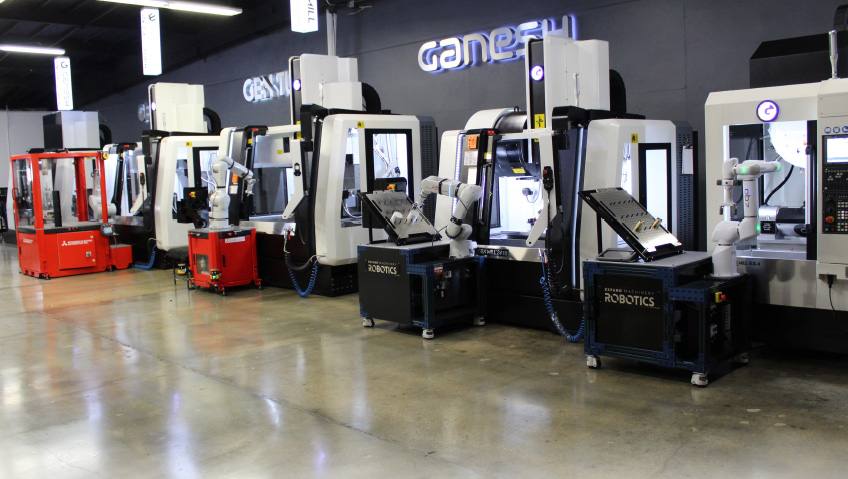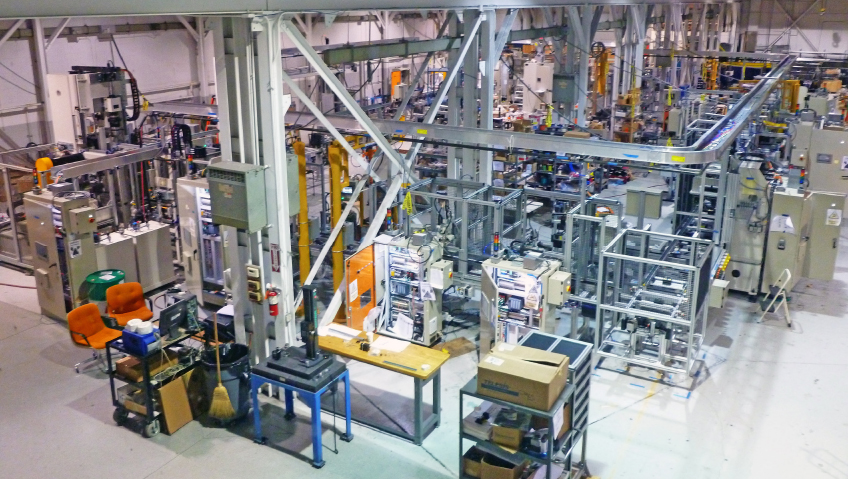StressMarq Biosciences Inc. is a biotechnology company based in Victoria, British Columbia that is responsible for creating some of the tools that have enabled researchers around the world to make several groundbreaking drug discoveries, particularly in the neurodegenerative disease space.
StressMarq is regarded internationally for its high quality bioreagents which include antibodies, aggregated proteins, and assay kits, and the company’s academic and biopharmaceutical customers are using these technologies to make meaningful strides in diagnostic and therapeutic advances. These discoveries are leading to breakthroughs in the field that have enabled scientists to proactively model neurodegenerative diseases while working to slow, stop, and eventually, reverse them in their tracks.
A matter of heart and mind
For President and CEO Ariel Louwrier, StressMarq Biosciences’ focus on neurodegenerative disease research is a matter close to his heart. Having lost his father to Alzheimer’s and his father-in-law to Lewy Body Dementia, there is both a personal and professional drive to better understand and eventually mitigate the impacts of neurodegenerative diseases that were historically under-researched.
Now, in what Louwrier refers to as the “Age of the Brain,” a better understanding of the physiological processes that lead to neurodegeneration is being elucidated.
Neurodegenerative diseases occur when there is a gradual loss or death of cells in the central nervous system. Plaques—which are the result of self-catalyzing proteins that deviate from their typical biological function—aggregate and ultimately kill healthy cells, leading to neurodegeneration.
StressMarq Biosciences has artificially replicated this process across disease states such as Alzheimer’s and Parkinson’s and accelerated it, enabling researchers to conduct research to better understand the behaviors of the aggregating proteins and how to slow, stop, or reverse this activity.
“We’re the ‘tools’ people, but overall, these tools really lift the sector, regardless of what else is happening. While the products we make are for research purposes only, they are transformational for diagnostic and therapeutic advancements in the field,” Louwrier explains.
Seeds of change
The biological tools that StressMarq Biosciences manufactures complement some of the pioneering work carried out by the Michael J. Fox Foundation and its Parkinson’s Progressive Market Initiative (PPMI), research that led to the development of what appears to be predictive technology (called the Synuclein Amplification Assay, or SAA). This technology is able to determine whether a patient has or could develop Parkinson’s with a significant degree of certainty.
“Part of the completed studies indicated for the first time that even if a person didn’t show Parkinson’s symptoms, there was a predictive element that suggested they were already on the path of developing the disease within a certain timeframe. That finding was completely new, because usually when symptoms appear, it’s generally too late to do a great deal in terms of returning the brain to normal health,” notes Louwrier.
When Parkinson’s progresses to the point of the presentation of symptoms, upwards of 50 to 60 percent of the brain’s dopaminergic neurons have been lost, which is a traumatic loss that will have significant impacts on a patient’s quality of life. Given the extraordinary ability of the brain to cope with this level of damage, if you could intervene at only 20 to 30 percent neuronal loss, the disease progression could be slowed, and a person’s quality of life could be greatly improved for a significant time period—possibly the rest of their life.
The method used to identify the disease requires the use of monomeric proteins associated with Parkinson’s disease—called alpha synuclein—which, when in their singular form, can aggregate. While this process is generally slow, it is greatly accelerated in the presence of existing natural aggregates, or “seeds” that are present in certain biological fluids such as cerebrospinal fluid from diseased patients. Using this method, the process can be accelerated to produce results in up to one to three days. Critically, these results would be assay-based, complementing or replacing existing cognitive evaluations alone.
As Louwrier explains, “The seeds, ironically, are exactly what those monomeric proteins become once they aggregate, so it’s kind of a circular accelerating event that doesn’t require any other form of intervention to occur, and the methods for detecting the aggregated proteins from their building blocks are simple and well established.”
There are, however, downsides to this technology. Because the proteins inherently self-aggregate, there is a tendency toward false positives, but StressMarq Biosciences has been working to create a monomeric preparation for this particular assay that removes the tendency to self-aggregate while still allowing for a strong positive response when seeded.
“It’s a bit analogous to a tug of war—you’re pulling in both directions, trying to find a sweet spot and set of conditions to create the perfect assay,” says Louwrier. To make things more complex, aggregated proteins and their precursors can exist as different variants, or ‘flavours,’ as he refers to them, and using different ones can produce very different outcomes. “We were trying to create this SAA assay preparation and I think we figured it out, so we’ll be looking to launch that for research purposes later this year.”
Breaking ground
StressMarq Biosciences always has something potentially groundbreaking in the product pipeline. Recently, the company worked to advance a patented antibody that showed great promise for diagnostic impact. At this point, however, it is being sold as a Parkinson’s research tool and is producing some very interesting data.
“We’re beginning to see some very interesting results with this antibody. It appears to detect specific disease states within the brain, so this is the sort of tool that could be particularly useful to researchers, because the results are not ambiguous,” says Louwrier.
He continues, “What’s really important about antibodies is that they are generally excellent binding agents. However, a given antibody may bind other things that are very similar structurally.” This can present a significant problem in that an antibody could bind to its target too indiscriminately to be useful. Since aggregated proteins are made of multiple units of identical monomers, there’s an unusually high degree of commonality between the two, be it the monomeric or aggregated form, which could produce an overwhelming background signal if both entities are significantly detected.
“We can detect aggregates in the gut of mice that were injected with artificial recombinant seeds in the brain weeks prior. While that’s not really novel, this is an area that will continue to be of relevance in the sector—that is, examining the connection between what is happening in the brain and how that translates to what is happening in the gut. This is referred to as the gut-brain-axis, or GBA.”
StressMarq has also developed a labelled monomeric protein that was used in studies in the United Kingdom, published in Science Advances, whereby the construct was used in cells to measure the beginnings of the oligomerization process in significant detail.
“You go from a point where there’s no signal, to signals being generated, so these proteins can be shown to interact with each other, forming aggregates. These can be readily identified using novel technology, so that was a very interesting study. It’s quite niche of course, but it’s another positive element in understanding and unraveling the mysteries of these diseases,” Louwrier says of that work being led by Dr. Matthew Horrocks from the University of Edinburgh.
There are a whole range of protein constructs offered by StressMarq Biosciences that are achieving fascinating results in different research applications worldwide and being published in peer-reviewed scientific journals. One of the more interesting ones from a physiological standpoint is tau, which is a protein that undergoes aggregation in Alzheimer’s disease. StressMarq recently launched a unique preparation of tau, designed to structurally mimic the aggregates found in patient brains.
“That has never been done before, and now that we know what that defined structure looks like, we have made it commercially available to scientists,” Louwrier says of the enabling nature of these tools for research purposes. “For the first time we can actually put something directly into the scientific toolbox for researchers that is designed to be structurally identical to what is seen in a patient brain.”
Making an impact
Unlike genetic techniques which take anywhere from six to 18 months to model in an animal host, StressMarq Biosciences’ recombinant protein aggregates can model the diseases in as few as 30 days, which not only saves time but also money. This is relevant in a sector where funding is dependent on the markets, institutional investors, and governments, where currently budgets are being tightened.
“I think the biopharma folks have been extremely receptive to the information that we’re able to give them in terms of our data and experience with these proteins because, and I’ll use the words from one of our clients in pharma, ‘you just saved us two years of work,’” Louwrier shares. In some cases, however, the two concepts have been merged: “You can have a genetic approach that creates a disease background, or a disease-prone background, and you take the proteins—the ‘seeds’ that StressMarq creates—and it accelerates even more.”
Through collaboration and education, the advantages of StressMarq Biosciences’ tools, plus the ingenuity and dedication of researchers, are taking neurodegenerative disease drug discovery to new places.
“We have a range of international collaborations going on at any given time—different proteins, different disease states—where we provide materials to scientists and in return, receive relevant data that we can show the rest of the world,” which serves to educate and advance the efforts of StressMarq and its customers.
One of those collaborators is Gubra, a contract research organization (CRO) that is utilizing StressMarq Biosciences’ proteins in new and extraordinary ways and providing valuable data. Louwrier refers to Gubra’s work as “visually arresting,” particularly the ability to develop three-dimensional brain imaging techniques that offer targeted imaging down to the single cell level.
“You can literally view something and delve into the brain. It’s extraordinary because it’s three-dimensional. Gubra has used experimental mouse brains, for instance, that have been stained with a particular antibody that diffuses into the tissue and binds to a target. They have used our materials to generate disease states in these experimental systems,” he says. “We are then able to visualize, in three dimensions, the impact of the pathology being generated, as well as other things that are relevant, including the dopaminergic neurons dying as a result. Gubra’s technology is outstanding—their visually arresting 3D video output feels like you are seeing what is happening inside the brain.”
Louwrier also highlights the work of additional companies in the drug discovery space that have used StressMarq Biosciences’ products. reMYND is a Belgian company developing best-in-class treatments using a proprietary drug discovery platform to restore function for patients with diseases caused by cellular dysfunction. Swedish company Cellectricon is another player doing interesting work, utilizing StressMarq’s proteins to seed neuronal cells grown in microfluidic chip-based environments.
Results-driven growth
For Louwrier, operating a successful business that offers employment opportunities on Vancouver Island and scientific research products of the highest caliber is a priority, and it is paying off in the form of company growth. But for him, the real reward of these efforts is knowing the products play a role in the scientific breakthroughs that are taking place, and that the company’s customers and partners are seeing results.
He says, “When I talk to a customer or collaborator and they say, ‘we just conducted trials X, Y, and Z and we can’t give you the details yet because it’s proprietary, but we want you to know that it worked,’ I walk home and that’s a really good day for me because somebody did something useful with our materials.”
Knowing that the products are effective is one thing but seeing the collective efforts to improve drug discovery in the neurodegenerative disease space—and hopefully patient outcomes—is a real source of pride, and one that continues to motivate the work of StressMarq Biosciences and its partners.






